
What is 700c Bike Tire? Tire Sizing Guide!
700c bike tires are a standard wheel size commonly used on road bikes, hybrid bikes, and some cyclocross and touring bikes. While 700c means the wheel’s diameter is about 700mm (or 27.5 inches), it’s not always that simple when selecting tires.
Choosing the right tire size is essential, whether you're repairing your bike or upgrading it, as tires directly affect ride quality and safety. This guide explains how tire width and rim size interact, helping you pick the best tires based on your bike type and riding needs.
What is 700c Wheel Size?
The 700c wheel is the standard size for most road bikes today. The term 700C refers to the outer diameter of the tire and wheel combination, which originally measured about 700mm (27.5 inches).
However, due to variations in tire widths and construction, the actual outer diameter can differ slightly. For example, a 23C tire has an outer diameter of about 668mm. The more accurate measurement for 700C is 622mm, which is the diameter of the rim. This shows any tire labeled as 700C fits a 622mm rim. Narrow 700c tires are ideal for speed on smooth roads, while wider ones offer better control on rough surfaces.
What is "c" in Tire Sizing?
The "c" in tire sizing originates from an old French system for classifying tire widths. In this system, letters "a" through "d" were used to indicate the width of a tire. Here's what each letter represented:
- a: The narrowest width.
- b: Slightly wider than "a".
- c: A mid-range width.
- d: The widest size.
In the case of 700c tires, the "700" originally referred to the nominal outer diameter of the tire (700 millimeters), and the "c" indicated a medium-width tire in that series. While tire widths have evolved, the "700c" designation has stuck, now referring to a standard rim diameter of 622 mm, commonly used on road and hybrid bikes.
So, today, "c" in tire sizing no longer directly refers to width but has become part of the historical name for this common wheel size.
Types of 700c Tires
Road Tires
Designed for high-speed riding on smooth, paved surfaces, road tires prioritize low rolling resistance and weight to enhance speed and efficiency. These tires are typically narrow, lightweight, and have minimal tread.
Common widths range from 23 mm to 28 mm. The narrow profile minimizes air resistance and reduces the tire's contact area with the road, contributing to faster speeds. Most road tires feature a slick or nearly slick tread pattern for minimal friction and maximum grip on smooth asphalt. Some models may have slight grooves to channel water and improve wet-weather handling.
Gravel and All-Terrain Tires
Built for mixed terrain, gravel, and adventure riding, these tires need to balance grip, puncture protection, and durability. The wider profile and aggressive tread patterns ensure stability and traction on loose surfaces like gravel, dirt, and mud.
Gravel tires generally range from 32 mm to 45 mm or more. The increased width provides more volume, which enhances comfort and traction on uneven terrain. Gravel tires often have a semi-slick center tread for efficient rolling on hardpack surfaces, with more aggressive side knobs to grip loose gravel or dirt during cornering. The tread designs vary from low-profile knobs for hard-packed dirt to larger, spaced-out lugs for muddy or loose terrain.
Commuter Tires
Commuter and hybrid tires are designed for everyday urban or suburban use. These tires strike a balance between speed, comfort, and durability. They are built to handle rough city streets, bike paths, and occasional off-road shortcuts.
Most commuter tires feature a smooth or lightly textured tread to handle a variety of surfaces, including pavement, gravel paths, and light trails. They are optimized for a smooth, efficient ride on asphalt, with enough grip to handle wet or uneven surfaces.
| Tire Size | Inch | Width (Range) | Type | Terrain | Tread Pattern | Key Features |
|---|---|---|---|---|---|---|
| 700c | 28" | 23–28 mm | Road | Paved roads | Slick or minimal grooves | Low rolling resistance, high speed |
| 700c | 28" | 32–45 mm | Gravel/All-Terrain | Gravel, mixed | Semi-slick with side knobs | Traction, puncture resistance |
| 700c | 28" | 28–42 mm | Commuter /Hybrid | Urban, light trails | Smooth or light tread | Puncture protection, durability |
| 700c | 28" | 30–33 mm | Cyclocross | Mixed (grass, mud) | Aggressive, open tread | Mud-shedding, grip on soft surfaces |
| 700c | 28" | 32–45 mm | Touring | Mixed, long-distance | Smooth with mild tread | Durability, load-bearing capacity |
Table 1: 700c Tire Sizes
29-Inch Bike Tire
29-inch bike tires are commonly used in mountain biking and are often referred to as "29er" tires. These tires have become the standard for many types of off-road bikes, especially cross-country (XC), trail, enduro, and even some downhill bikes.
The 29-inch tire is the biggest size for mountain bikes. It's known for higher top speeds and better ability to roll over obstacles. However, shorter riders may find them harder to handle, but they're popular in many mountain biking styles.
Example:
Some cyclists prefer to use imperial measurements for bike tires. These measurements are shown as 29 x 2.10 or 29 x 2.25 commonly used in mountain bike tires.
- The first number (29 inches) refers to the overall diameter of the tire, including both the rim and tire at a specific pressure. It's not just the rim size, but the full diameter with the tire mounted.
- The second number (2.10 or 2.25 inches) shows the width of the tire. For instance, 2.10 inches means the tire is two-and-a-tenth inches wide, while 2.25 inches represents two-and-a-quarter inches at the given pressure.
650B Tires
The 650B bike tires are commonly used on gravel and touring bikes, offering a perfect balance for all-terrain, adventure, and gravel riding. These tires share the same inner diameter as 27.5-inch mountain bike tires, but they are specifically designed for more versatile surfaces rather than traditional mountain trails. While they are referred to as 27.5-inch wheels, their actual diameter is closer to 27 inches. This slightly smaller size gives them faster acceleration and makes them easier to maneuver compared to larger 29-inch wheels.
Key advantages of 650B tires:
- Responsive and balanced handling. They create less steering inertia, allowing for quicker turns and better agility.
- Work well with long-travel suspension systems, making them suitable for bikes built for rough and varied terrain.
Compared to 26-inch wheels, 650B tires provide a smoother ride and better grip, though they don't match the rolling efficiency of 29-inch wheels. However, they strike a great balance between speed, strength, stiffness, and agility, giving riders a more natural feel when navigating technical terrain or tight corners.
Bike Tires Types
Mountain bike tires
Mountain bike tires come in sizes like 26", 27.5", and 29", with widths ranging from 1.6" to 3" depending on the terrain. Wider tires, typically 2.3" or more, are better for rough trails, while narrower tires work well for smoother surfaces. Tread patterns vary, with racing tires having a low profile for speed, while trail and downhill tires have larger knobs for better grip. Many mountain bikes use tubeless tires to prevent punctures and allow for lower pressure. Some riders also use studded tires for icy conditions, though these are not suitable for regular roads.
Road bike tires
Road bike tires are smooth with little tread to reduce rolling resistance. Most modern road bikes use 700C tires, which range in width from 23 mm to 32 mm. Narrower tires, like 25mm, are fast and light, while wider options like 28 mm or 32 mm offer more comfort by reducing road vibrations. Tires wider than 32 mm are usually for commuter or hybrid bikes. The older 27" tire size is no longer common and doesn't fit modern rims, but some brands still make them for vintage bikes.
How Tire Sizing Works?
Tire sizes are usually shown by the outer diameter and the width (like 29 x 2.3" or 700c x 38 mm). Mountain bike tires are often measured in inches, while road and gravel tires are measured in millimeters. Here's a breakdown of tire diameter and width.
And I would like to share more detailed information about how tire sizing works. I get the information from Sheldonbrown: Tire Sizing Systems. Check it out!
Diameter
Diameter is an important factor when determining tire size, as it affects how the tire fits the wheel and impacts the overall performance of your vehicle.
Mountain Tires:
- The number 29 in a 29" mountain bike tire refers to the outer diameter when mounted on a 29" rim.
- A 29" rim actually measures around 24.5" (622 mm) in diameter where the tire bead sits—this is called the “bead seat diameter.”
- The full wheel with the tire mounted and inflated will rarely measure exactly 29" due to differences in tire width and casing.
Road and Gravel Tires:
- The 700 in a 700c tire refers to the total diameter in millimeters when paired with a 700c rim.
- These rims are also 622 mm in diameter, just like 29" mountain bike rims.
- Just like with mountain tires, the actual size may vary depending on the width and shape of the tire.
- The same principles apply to 650b tires, which fit rims with a 584 mm diameter.
Width
The first number in your tire size shows the width of the tire in millimeters. This measurement is taken from one sidewall to the other. Width is an important factor when determining the correct tire size for your vehicle, affecting how the tire fits and performs.
The width shown on the tire is what it measures when properly inflated on the correct rim. For example, a 29 x 2.3" mountain tire will be 2.3" wide, and a 700c x 47 mm gravel tire will be 47 mm wide.
Why Is It Important to Choose the Right Tire Size?
Choosing the correct tire size for your 700c bike is essential for performance, comfort, and safety. The right size improves how your bike handles, ensuring better control on various terrains and at different speeds. It helps prevent accidents caused by slipping or losing control, especially when turning at high speeds.
Proper tire size also enhances your overall riding experience by offering better grip, smoother rides, and reducing the risk of skidding. By selecting the ideal size, you ensure both efficiency and safety, making your rides more enjoyable and secure.
Why 700c is the Best Bike Tire Size?
The 700c wheel is a great choice for cyclists due to its large diameter, lightweight design, and high rolling efficiency. It’s perfect for road bikes, track bikes, and fixed-gear bikes because it offers excellent speed and smooth handling.
These wheels also provide versatility, allowing riders to use different tire widths and tread patterns, making them suitable for both speed riding and everyday commuting. With its ability to deliver better performance and control, the 700c wheel is an ideal option for those who want a reliable and efficient ride.
U2 Step-Thru Electric Bike for Adults
The iHoverboard U2 Step-Thru Electric Bike perfectly combines style, comfort, and practicality. Designed with city riders in mind, this bike offers a smooth, enjoyable ride while maintaining a sleek, classic appearance. Whether commuting or exploring, the U2 electric bike is built to provide both efficiency and elegance on every journey.

Key Features:
- Tire Size - Equipped with 26x1.95" high-performance tires, these Chaoyang inflatable tires provide great durability and grip, ensuring a smooth and comfortable ride on various terrains.
- Sturdy Step-Thru Frame - The step-through design makes it easy to mount and dismount, offering comfort and safety for riders of all levels.
- Front Suspension - The high-quality front suspension system absorbs shocks, giving you a smoother ride over bumps and uneven surfaces.
- Enhanced Battery Power - With a 36V 13Ah battery, the U2 offers a pure electric range of 37-47 miles, and an additional 6-9 miles with pedal assist, perfect for long rides.
- Mechanical Brake System - Advanced mechanical brakes ensure smooth and responsive stopping power, enhancing control and safety on every trip.
Conclusion
The 700c size is a popular choice for road bikes due to its large diameter and efficient design, offering great speed and smooth handling. It's versatile and can be used for both racing and commuting, with options to fit different riding styles.
FAQs about Tire Size
✅How to check tire size?
A: The tire size on your vehicle and wheels may be found in locations. You can check by Sidewall of your tire and internal body of the driving force aspect door.
✅How does wheel size affect street tire size selection?
A: The wheel determines how large or small a street tire may be so one can fit nicely between its spokes. The diameter of a road wheel have to be matched with the aid of a comparable range of inches when seeking out every other suitable fixture.
✅What height is a 700c bike good for?
A: 700c will continue to be the race and conventional road motorcycle trendy for humans taller than approximately 5’5". For people underneath that peak, they have got the 650c length (571 bead seat), 26", and who knows, perhaps a few correct bike options in 650b. For a short time, the 700c wheel size became the standard mountain bike wheel size.
Product Category
Recent Posts

Up to 50% Off! Our Black Friday 2024 Event Is HERE!

Best Hoverboard with Seat: K3 Hoverboard Go-Kart Guide!
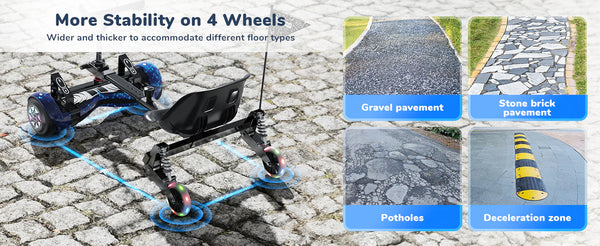
Go-Kart: The Complete Guide to Hoverboard with Seat
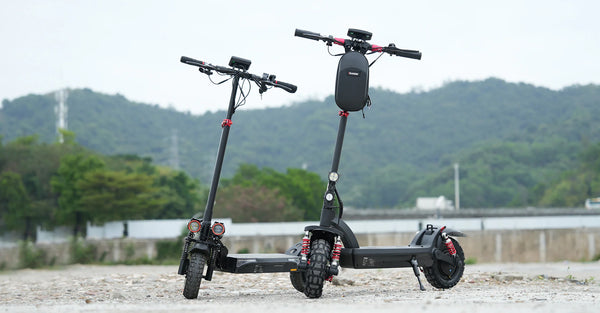
Electric Scooter Wheels: Solid Tires vs Pneumatic Tires



































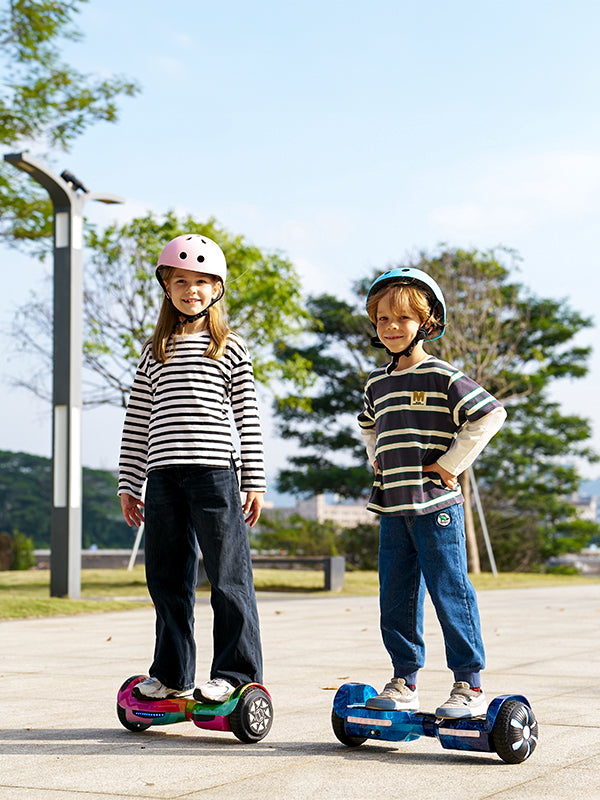




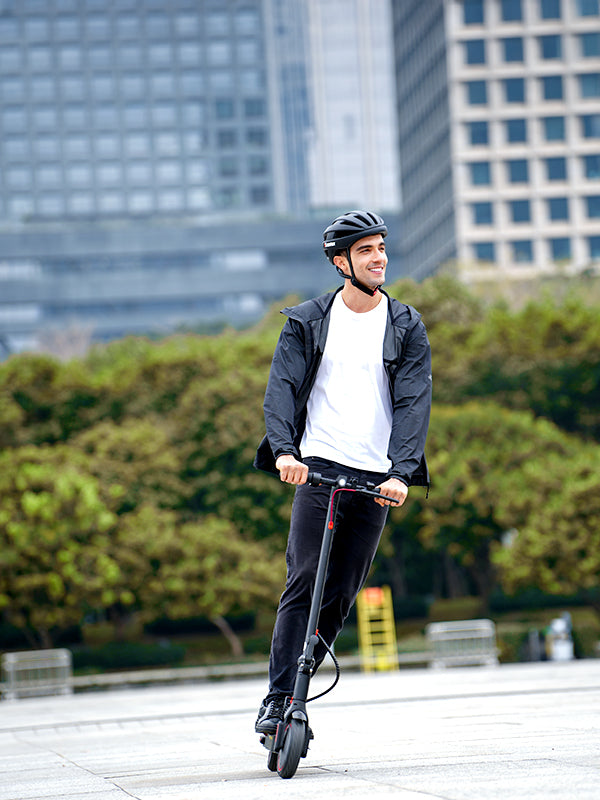

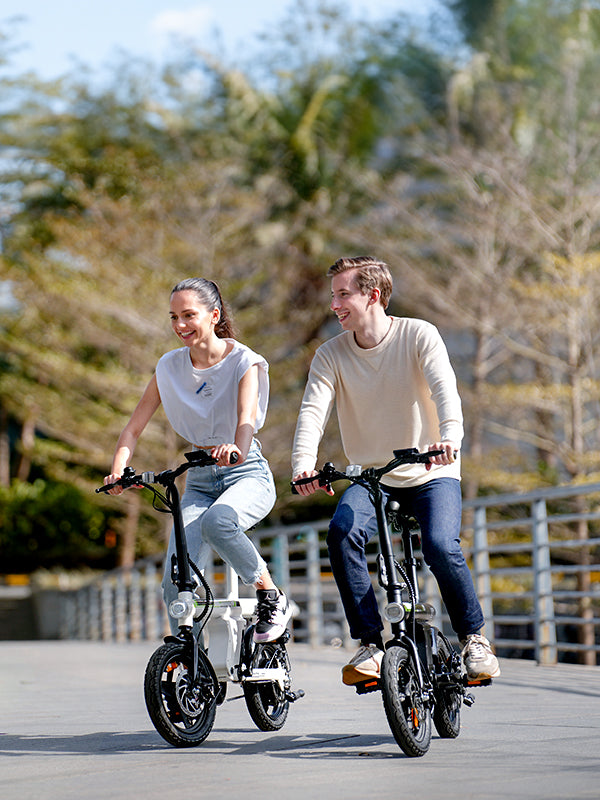










Still, need help? Contact Us: support@ihoverboard.com
What's the option? Check out the option now!
Leave us a message